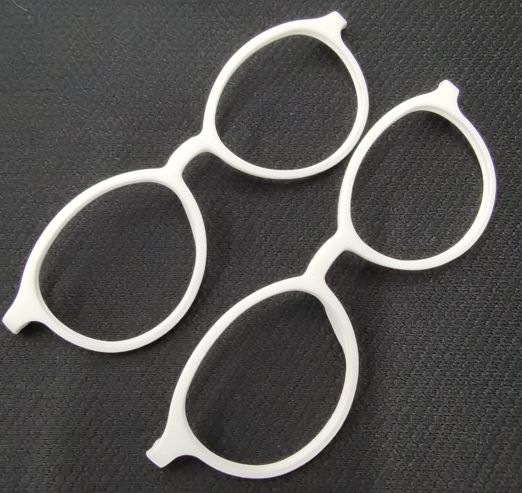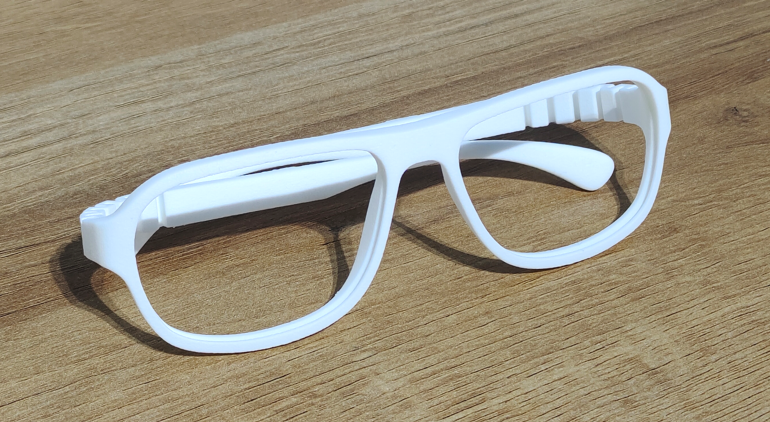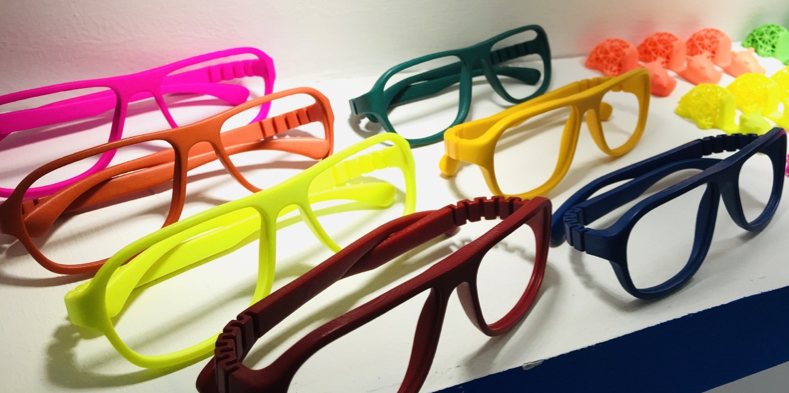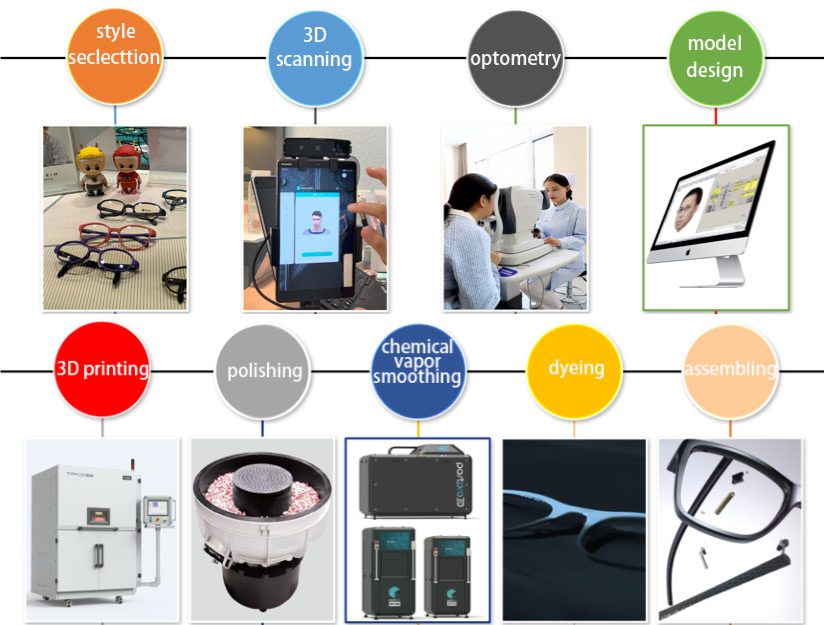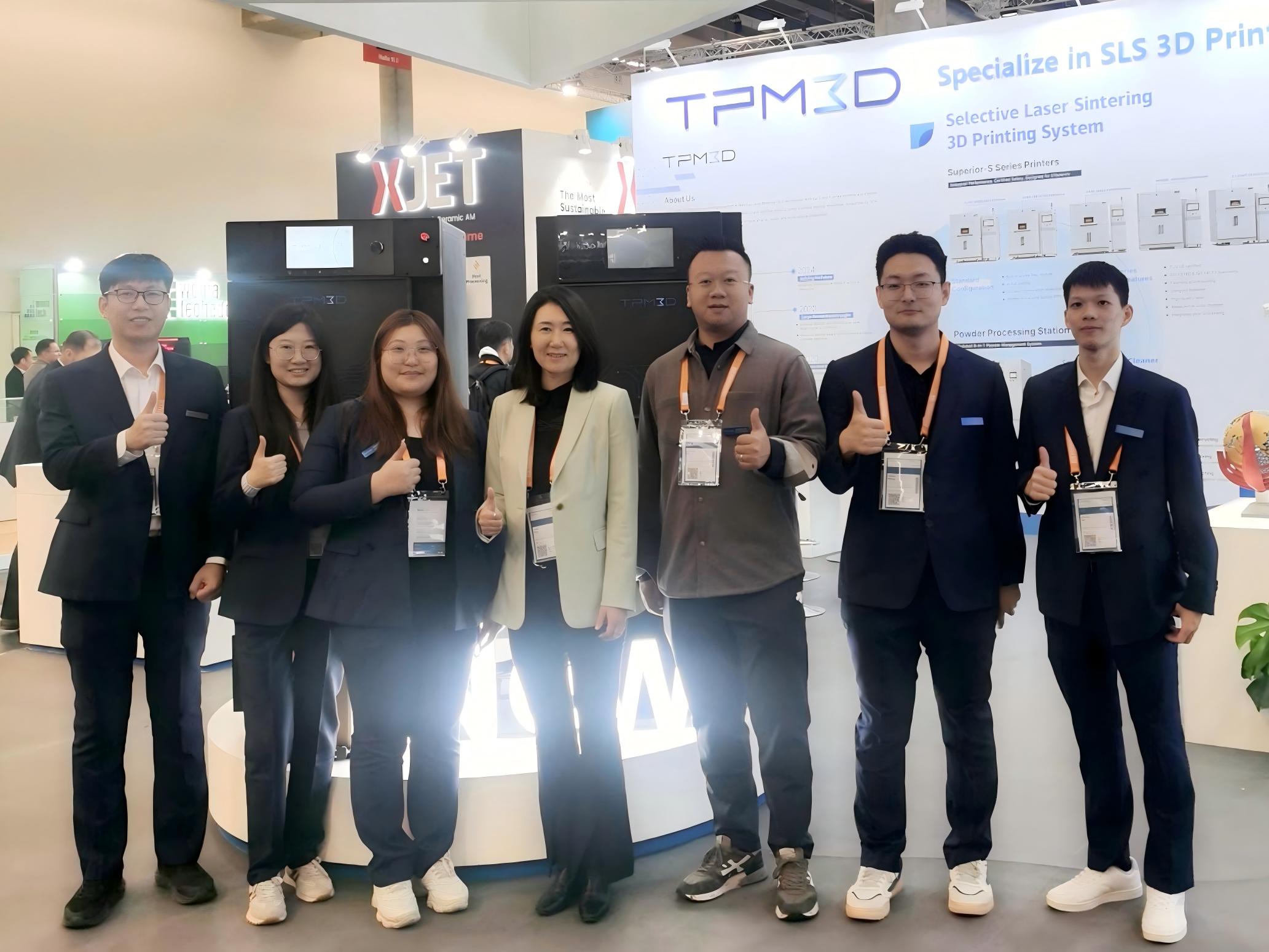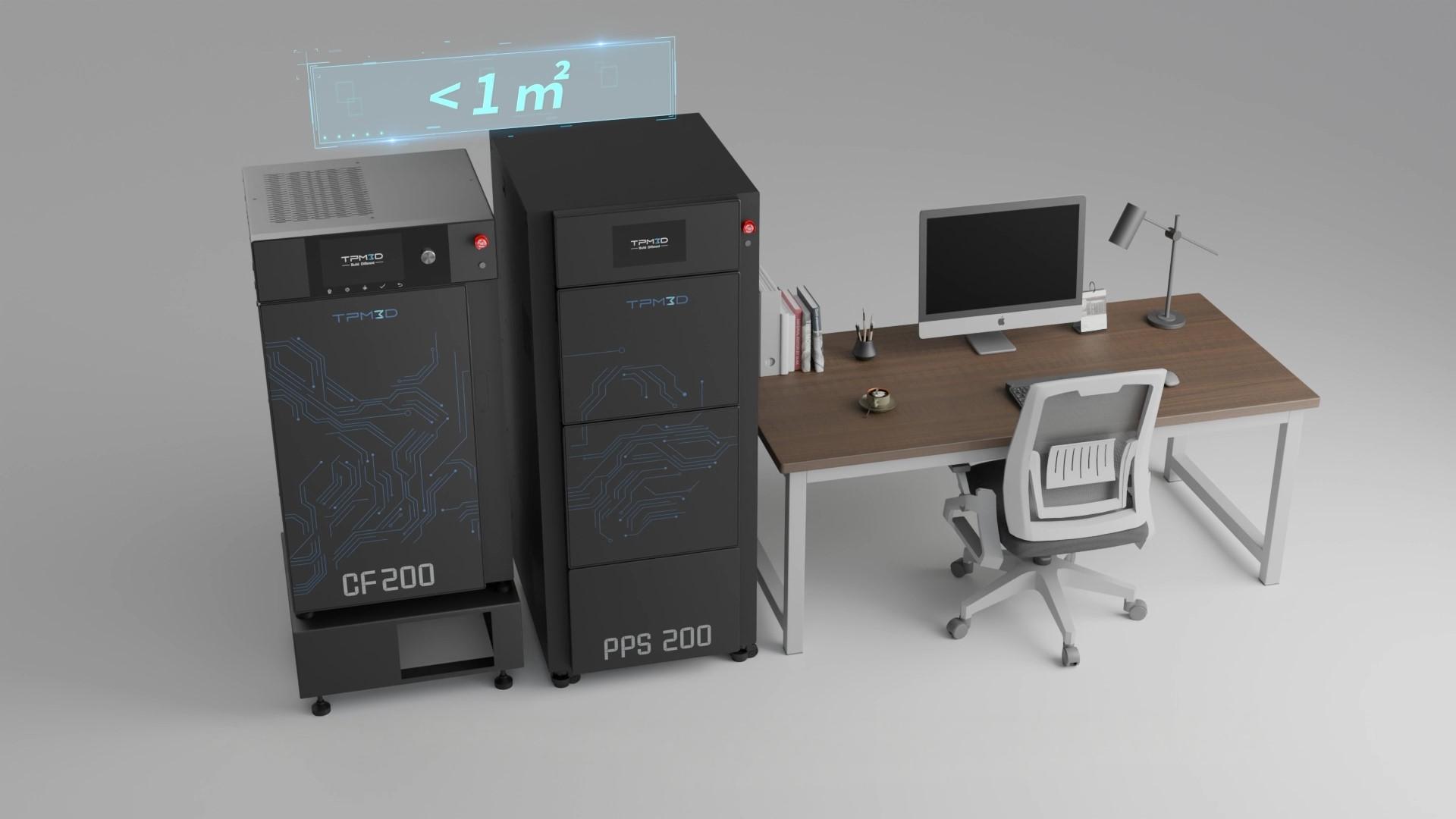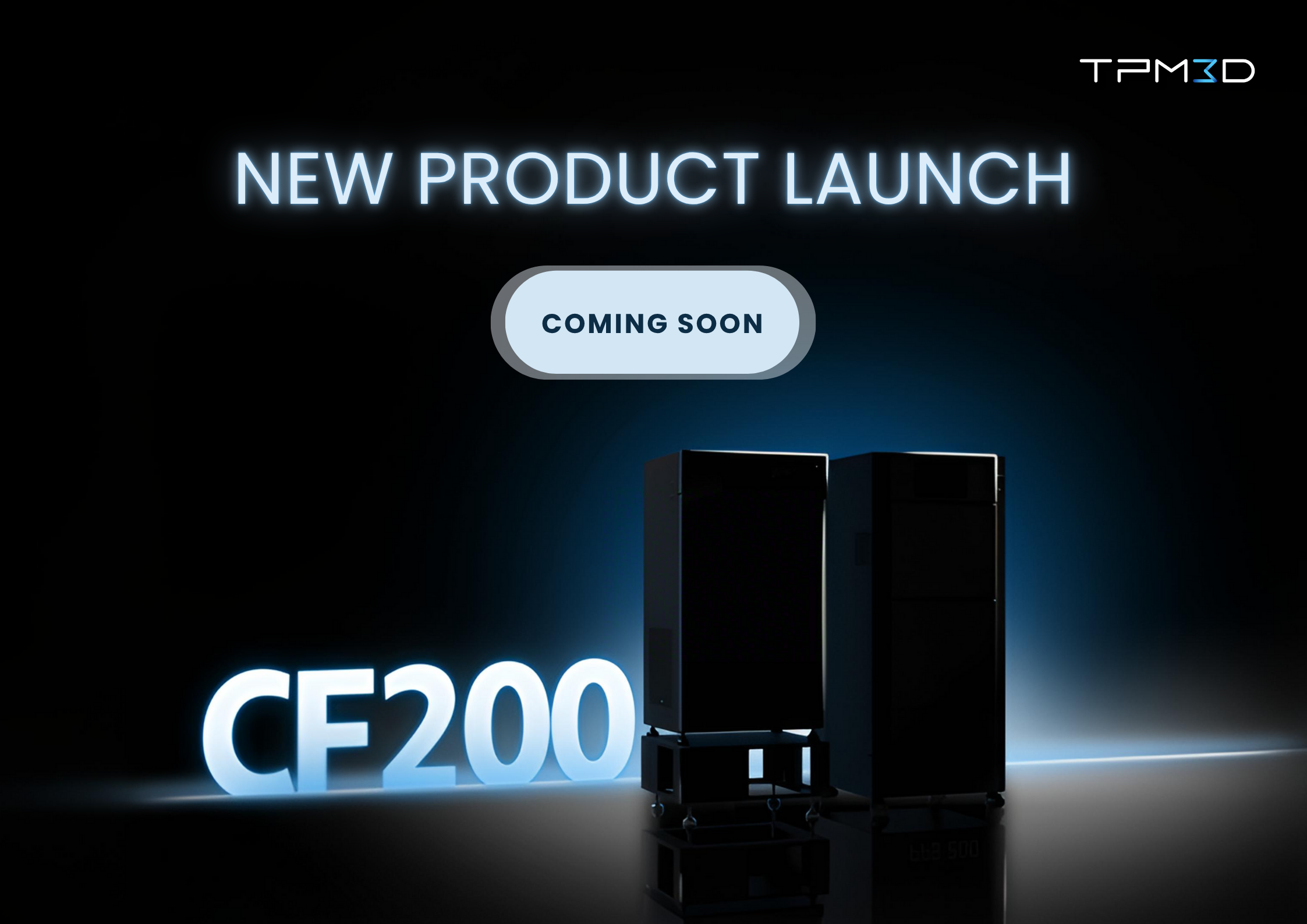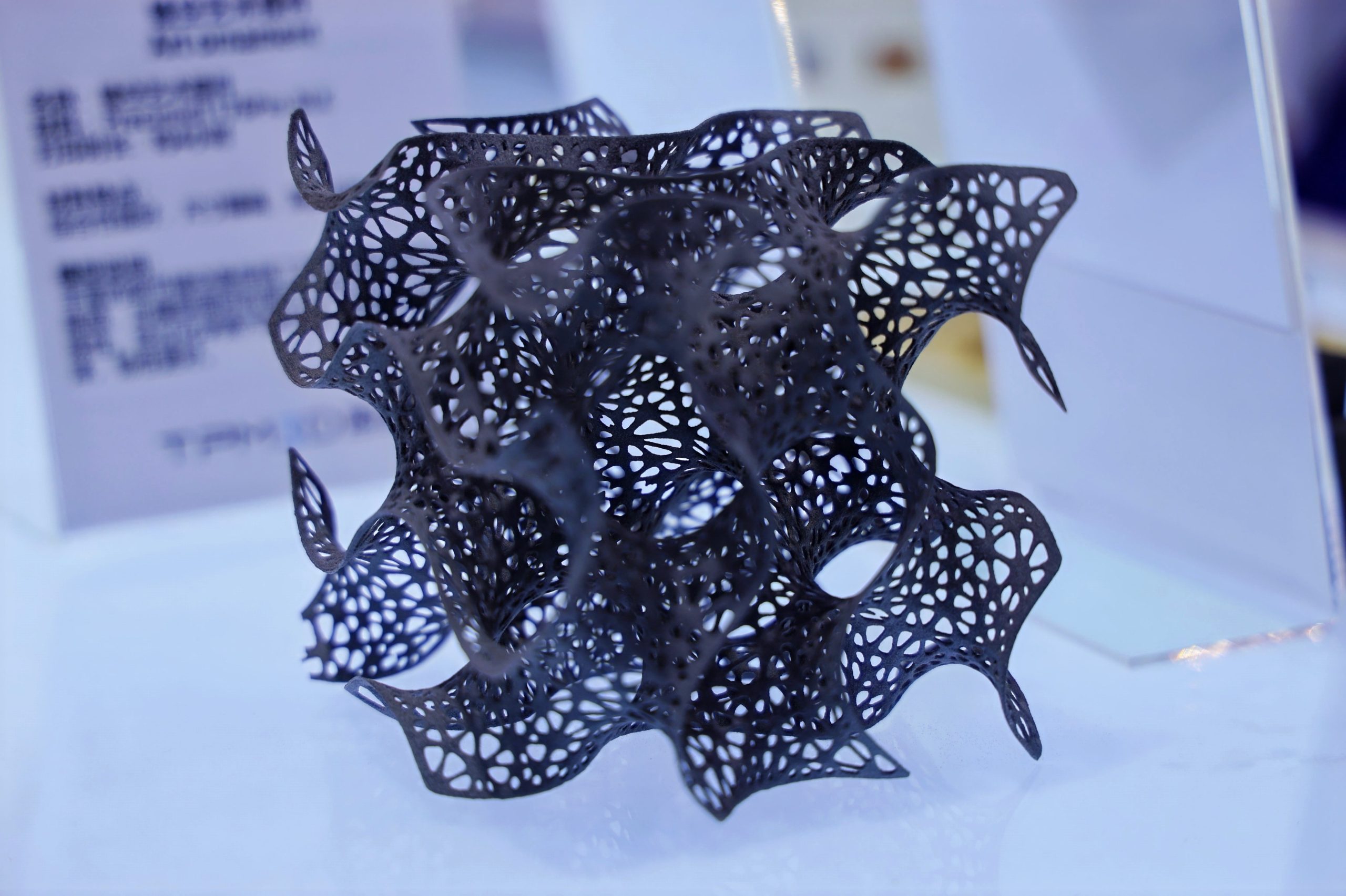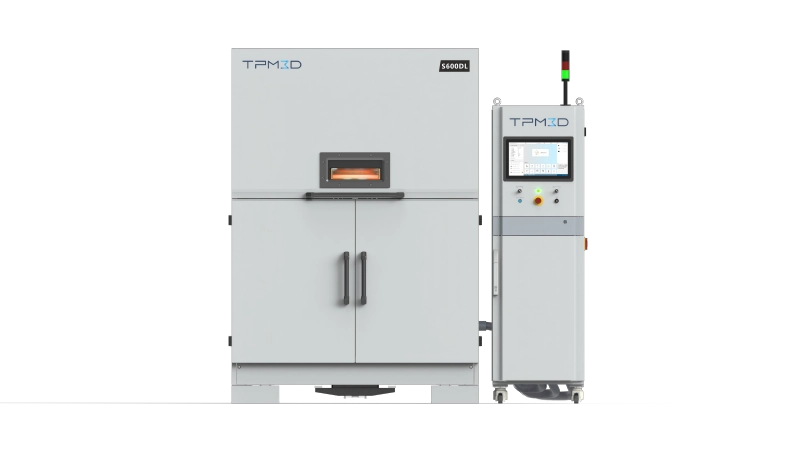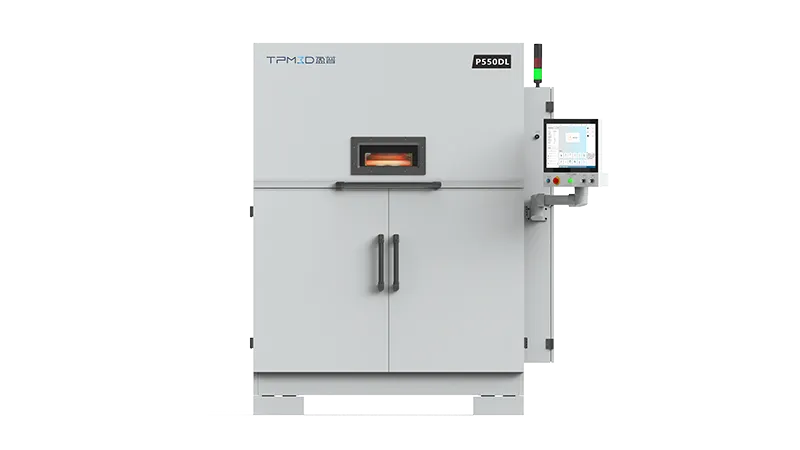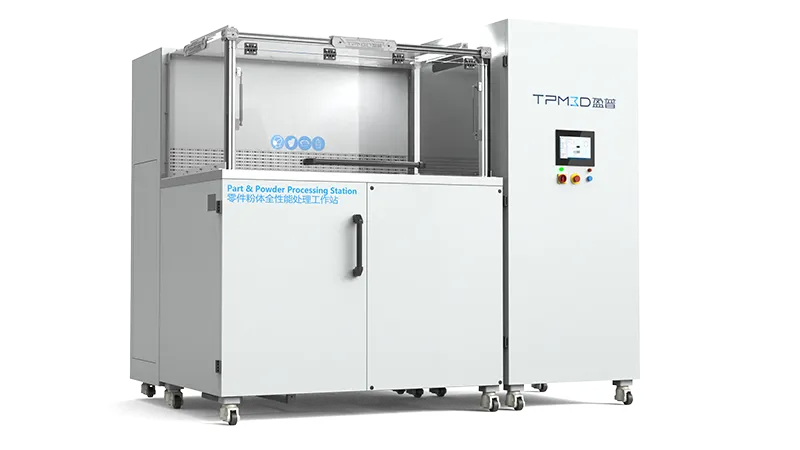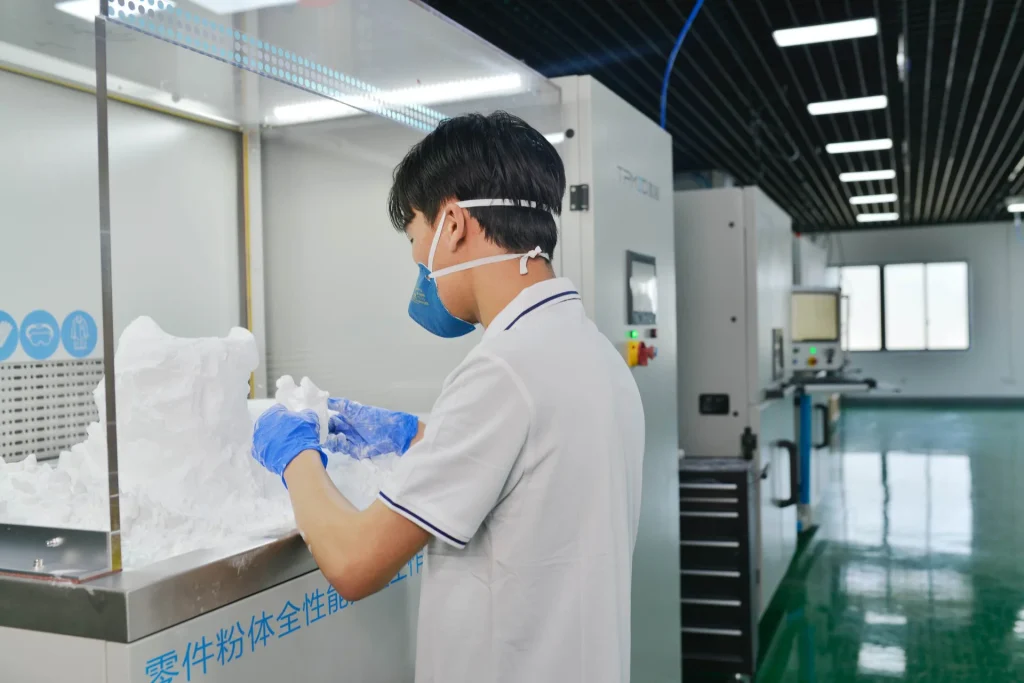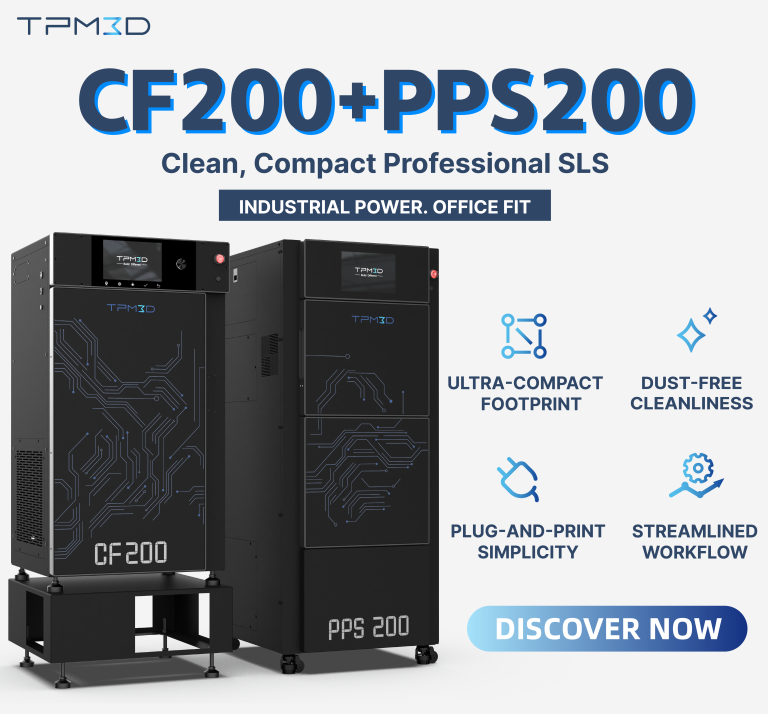Glasses are part utility, part personal statement, and today, many consumers want both a perfect fit and a unique look. 3D printing technology has made it possible to 3D print glasses frames that combine comfort, style, and durability. In particular, SLS 3D printing has turned bespoke eyewear from a niche luxury into a fast, scalable service.
Below is a clear, step-by-step rundown of how a pair of custom SLS 3D-printed glasses is produced, from first scan to final delivery.
1. Choose a frame style and take a 3D scan
Customers pick a frame shape (or a design sample) at the store. A quick 3D facial/head scan captures the wearer’s contours; a typical scan takes 30 seconds to 1 minute. These precise measurements are the foundation for a truly personalized fit when you 3D print glasses frames.
2. Optometry and lens selection
While the frame is being prepared, the customer completes the usual eye test and chooses lens types and coatings. Lens specs are integrated into the frame design to ensure correct optical alignment.
3. Custom design and personalization
Design engineers adapt the selected frame to the scan data, adding any requested custom elements — text, patterns, or adjusted geometry. The model is checked for assembly features (hinges, screws), proper clearances, and the thin-wall/curved surfaces typical of eyewear. This is where creativity meets precision before moving on to 3D-printed glasses frames tailored to each customer.
4. 3D printing (SLS)
Once the design is finalized, it goes to the SLS printer. For frames, TPM3D typically uses Precidim1172Pro (PA12) — a nylon material that delivers toughness, low weight, and good thermal/aging resistance. SLS technology allows manufacturers to 3D print glasses frames as integrated parts (no supports needed), keeping layer lines minimal and enabling complex lattice or aesthetic details.
TPM3D’s P360 industrial printer (build chamber: 360 × 360 × 600 mm) is well-suited for stable, repeatable production and can meet small-batch or scale-up needs.
5. Post-processing: smoothing & finishing
Printed frames undergo post-processing to improve feel and appearance. Chemical vapor smoothing is commonly used to densify the surface, reduce micro-roughness, improve toughness and water resistance, and make dyeing/colouring easier. This step is important for comfort and cosmetics — crucial factors for anyone choosing to 3D print glasses frames for personalized use.
6. Component installation & assembly
After finishing, technicians install hinges, screws, temples/strips, and fit the polished lenses. Adjustment and quality checks ensure fit, optical alignment, and function (hinge action, screw torque, etc.).
7. Final inspection and delivery
A final QA inspection confirms fit, finish, and that the frame meets the design intent. The finished glasses are packaged and shipped to the customer — often delivered directly to their door.
What makes SLS a good choice for custom eyewear?
-
No support structures: enables complex, lightweight geometries and integrated details.
-
Material performance: PA12 (Precidim1172Pro) gives a very light frame (frames can weigh ~5 g each; a full pair often under 10 g) with strong mechanical and thermal properties.
-
Precision & repeatability: industrial SLS keeps dimensional accuracy and consistent part quality.
-
Fast turnaround & scalability: digital workflow plus batch printing allows faster delivery than traditional handmade methods, and easier scaling for small production runs.
Typical timeline
From scan → design → print → post-process → assembly, customers can expect a much shorter cycle than traditional hand-made customization (which can take 6–10 weeks). Exact lead times depend on shop workload and post-processing choices, but digital workflows commonly deliver in days rather than weeks for small runs.
With TPM3D’s technology, businesses can efficiently 3D print glasses frames with precision and style, from concept to finished product in record time.

